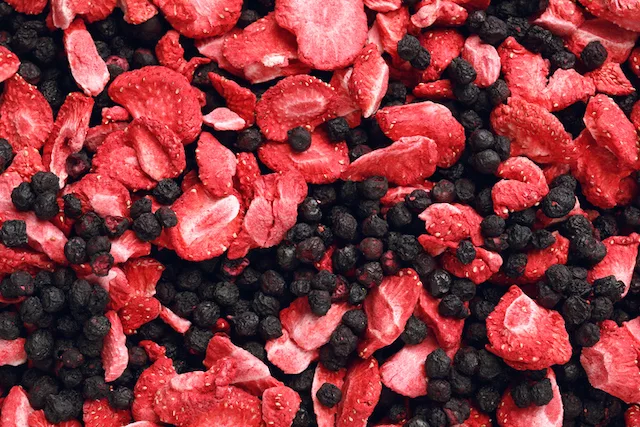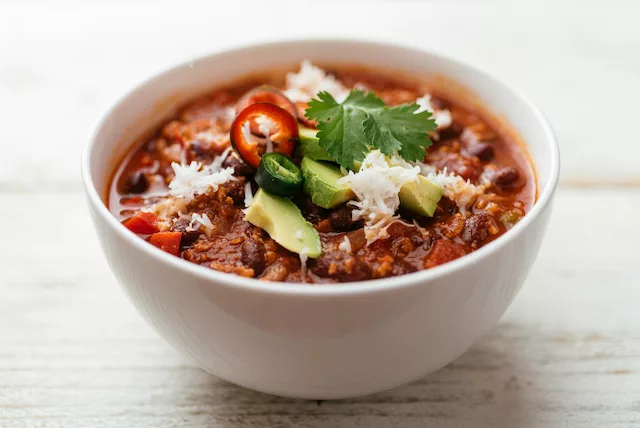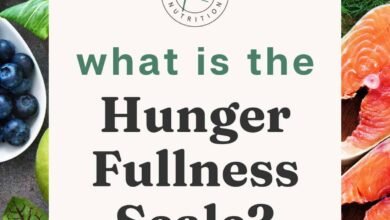The 7 Best High-Fiber Foods at Trader Joe’s

Shavonne Morrison, MS, RD, LD, shares the key benefits of dietary fiber and how much you need daily. Plus: her picks for the best high-fiber foods at Trader Joe’s.
Trader Joe’s is a popular spot for many reasons… and it deserves the hype. The grocery chain has a wide variety of foods from many places around the world, as well as clever marketing and an in-store experience that feels just as unique as the foods they offer. You won’t find many of the crowd-pleasing items that TJ’s offers at any other store, hence the cult following. Better yet, they offer a selection of foods at competitive prices that any health- and flavor-conscious shopper can appreciate.
Among these noteworthy offerings are a plethora of food choices—from pre-packaged to frozen—that are rich in fiber to help keep you full while promoting countless aspects of well-being. Fiber makes these foods ideal for creating balanced meals that support healthy digestion, immune function, and maintaining a healthy weight.
Before I share my favorite high-fiber finds at Trader Joe’s, let’s first recap why dietary fiber is so crucial to begin with, as well as how many grams you should aim for daily.
Why Is Fiber Important?
It’s not a secret anymore: Fiber is essential for overall health and well-being.
Among its many benefits, fiber helps:
- maintain gut health by promoting healthy digestion and feeding the “good” bacteria in your gut
- slow the digestion of carbohydrates, resulting in better blood sugar control and energy balance throughout the day
- clear excess cholesterol from the body and promote heart health
- promote weight loss or maintenance by keeping you full for longer and helping you avoid overeating or excessive snacking
However, the fact remains that most Americans are not getting enough fiber in their diet each day. Experts chalk that up to a variety of factors, including a low intake of fruits and vegetables and a high intake of ultra-processed foods.
In short, many people rely on low-quality foods to make it from one meal to the next, resulting in a high intake of calories and a low intake of fiber and other essential nutrients. This can lead to weight gain, low energy, poor digestion, and a weakened immune system.
Sources and Types of Fiber
Fiber is found in many whole foods like fruits, vegetables, whole grains, and beans—as well as some processed foods. In other words, not every processed food should be avoided at all costs. (Let’s not swing to extremes and focus on balance instead.)
Tip: A great way to think about finding packaged or processed foods that are a good source of fiber is to check the nutrition facts label. If there are more than five grams of fiber per serving, then it’s considered a good source of fiber. However, a gram here and a gram there will surely add up and support a healthy diet—especially if you’re among the many people who don’t reach their daily fiber requirements.
To boost your daily fiber intake with ease, check out HUM’s Beauty zzZz Gummies. They contain three grams of fiber (two of which are prebiotic) as well as melatonin to help you fall asleep faster.
There are two types of fiber: soluble and insoluble. We need both in our diet, but they serve different functions:
- Soluble fibers dissolve in water and are typically found in the flesh of fruits and vegetables. They slow digestion, help balance blood sugar, and remove excess cholesterol.
- Insoluble fibers are found in the skin of fruits and vegetables, as well as in whole grains. They add bulk to stool and make bowel movements easier to pass.
How Much Fiber Do I Need Each Day?
The amount of fiber you need each day varies from person to person. Generally, most people require somewhere between 19 to 38 grams per day. Women typically need 26 grams and men need 38 grams of fiber daily.
As we age, the recommended amount of fiber decreases due to changes in our digestion, meaning adults over 50 do not require as much. Women over 50 need 21 grams and men over 50 need 30 grams. Our digestion becomes slower as we age, making us more prone to constipation. Eating too much fiber can cause or worsen constipation, so it’s recommended that older adults eat a few grams less than younger adults.
It’s important to remember that when increasing your fiber intake, slow and steady wins the race. Consuming more fiber than your body is used to in one sitting can result in bloating, gas, and constipation. You can avoid these unpleasant symptoms by slowly incorporating fibrous foods into your diet over a few days to a few weeks, along with plenty of fluids and regular movement or exercise.

7 High-Fiber Foods to Buy at Trader Joe’s
Now that you know how important fiber is for your diet and health, here are some great options to consider purchasing on your next trip to Trader Joe’s.
Freeze Dried Strawberries
Fruits are a great source of fiber, but freeze-dried fruits can have more fiber per serving—in this case, seven grams. In addition to the fiber in strawberries, these are a good buy because they contain no added sugars and are a good source of iron as well.
You can enjoy freeze-dried fruits on their own or add them to oatmeal, yogurt, or baked goods.
Organic 3 Grain Tempeh
Plant-based foods are a great option if you’re looking for fiber and protein in one package. Tempeh is made from fermented soybeans, and contains an impressive 10 grams of fiber, 19 grams of protein, and two milligrams of iron per serving.
You can prepare tempeh in many ways. Some people season it, cook it and eat it with rice or vegetables.
Quinoa and Black Bean Tortilla Chips
Black beans are notorious for being a healthy source of fiber and protein. While they aren’t often found in chips, they make these chips a more balanced snack or addition to your appetizer plate.
While they have just three grams of fiber per serving (about eight chips), it’s safe to say a more realistic serving for most people would be around twice that, which would bring the fiber to six grams per serving and meet our fiber-rich criteria.
You could pair these chips with a hearty salsa to get some veggies in. Otherwise, grab some guacamole to load up on healthy fats and make it a balanced snack.

Organic Vegetarian Chili
If you’re in the mood for healthy comfort food, this vegetarian chili is a great pick. A serving size is one can, which contains a whopping 10 grams of fiber from beans and veggies.
It’s also a great source of iron for energy support and has 15 grams of protein, which will help keep you full, as well.
Steamed Lentils
Lentils are a great source of fiber and plant-based iron, but the downside is they take a while to prepare. These lentils are ready to eat and can be added to vegan or vegetarian dishes, or eaten on their own. With six grams of fiber and 10 grams of protein per serving, this is a filling meal option.
Almond Butter Chia Overnight Oats
It’s best to start your day with fiber to keep you full throughout the morning. These overnight oats are a convenient option to grab, especially if you are on your way out the door and need something healthy quick.
One serving (the whole container) contains eight grams of fiber and 12 grams of protein. It also has a good amount of iron, calcium, and potassium.
Organic Dried & Pitted Deglet Noor Dates
Dates are great to have as a pantry staple. Unlike many dried fruits you’ll find in stores, these do not have added sugar, which is a major plus.
To get creative, you can fill dates with nut butter and some hemp hearts sprinkled on top as a snack, or chop and add them to oatmeal (which, by the way, contains soluble and insoluble fiber). You can toss them in a smoothie or soften them and add them to baked goods to add sweetness.
These dates have three grams of fiber per serving (five dates). While they are not the highest fiber item to make this Trader Joe’s shopping list, they are usually added to a meal to increase fiber content and are a good source of fiber in that respect.
Just keep in mind that due to the sugar content, dates are best enjoyed in combination with healthy fats or protein, or as a treat in a dessert.
The Takeaway
Fiber is an important part of a healthy diet, and it doesn’t have to be a challenge to get enough each day. It just takes some mindfulness and awareness of all your options, which might be more than you think. Better yet, you can find many high-fiber foods at Trader Joe’s that are cost-effective and delicious.
Try to look for items that have around five or more grams of fiber per serving, yet remember to aim for balance rather than restriction when making choices.
It’s especially important to drink plenty of fluids and move your body daily when increasing your fiber intake. And lastly, in case you’re wondering, it is possible to eat too much fiber. Sticking to the recommended amounts is best unless your doctor or dietitian suggests otherwise.
Source link
#HighFiber #Foods #Trader #Joes



